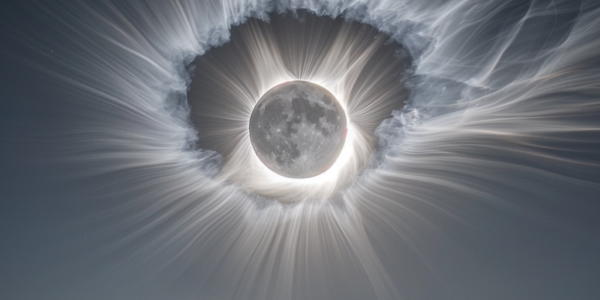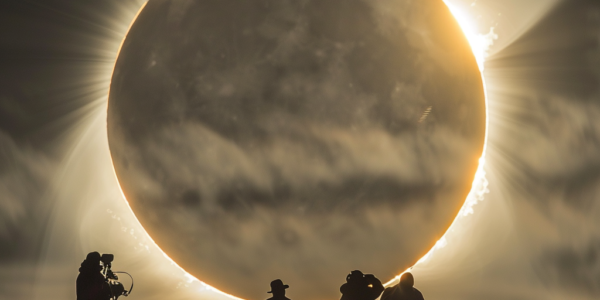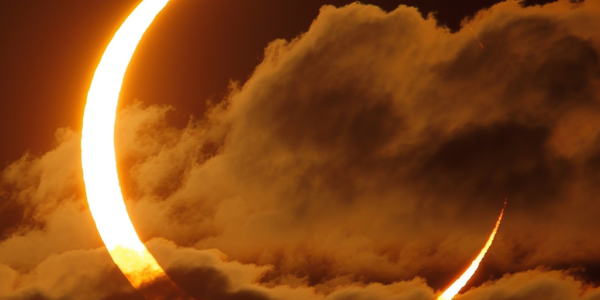Geopolitical Significance of the Moon Sparks Interest and Exploration
The upcoming total eclipse of the sun by the moon has sparked a renewed interest in the geopolitical significance of the moon. George Friedman, a renowned geopolitical analyst, has taken this rare celestial event as an opportunity to delve into the intricate relationship between the moon, Earth, and humanity. In addition to the cosmic significance, Friedman is in the process of writing a book on the geopolitics of the moon, prompting him to explore early thoughts on the subject. The moon’s profound connection to Earth, its potential as a source of valuable minerals and solar energy, and its strategic opportunities for exerting influence and control over Earth are all key points of interest in understanding the geopolitical significance of the moon.
Solar Eclipse 2024: Merchandise and Accessories Galore
As the 2024 solar eclipse approaches, Walmart and Etsy are offering a variety of eclipse-themed merchandise including shirts, accessories, and food items to help enthusiasts commemorate the event. From long-sleeve eclipse shirts to solar eclipse sugar cookies, individuals are eager to make the most of this rare celestial occurrence.
Solar Eclipse Viewing Event at University of Arkansas Campus
On Monday, April 8, a partial eclipse of the sun will be visible on the U of A campus, and for much of the state of Arkansas, a total eclipse will occur. Approximately 1.5 million individuals are projected to journey to the state to witness the eclipse, and many are expected in the Northwest Arkansas area. The moon will partially eclipse the sun from 12:32 p.m. to 3:09 p.m. as viewed from campus, with maximum coverage at 1:51 p.m. To celebrate this unique and extraordinary astrological event, the campus community is encouraged to gather around 1:30 p.m. on April 8 at the Chi Omega Greek Theatre to view the eclipse. There will be a small number of special eclipse viewing glasses available at this event. University Housing has already distributed more than 7,000 eclipse glasses to its residents. These glasses were purchased by the Arkansas Space Grant Consortium.
Anticipation Builds for 2024 Solar Eclipse Across the United States
The 2024 solar eclipse is set to cross a wide swath of the United States on April 8, 2024, with an estimated 34 million Americans expected to witness the celestial event. Unlike the 2017 eclipse, this one is projected to last longer, offering a captivating display for sky gazers. The path of totality spans from Mexico, through the U.S., and extends across Texas and North America to the coast of Newfoundland, Canada. States in the path of totality include Texas, Oklahoma, Arkansas, Missouri, Illinois, Kentucky, Indiana, Michigan, Ohio, Pennsylvania, New York, Vermont, New Hampshire, and Maine. The solar eclipse is scheduled for Monday, April 8, 2024, with the path of totality projected to cross the United States from approximately 2:27 p.m. to 3:35 p.m. Eastern time. As the event draws near, it’s essential for individuals to equip themselves with the necessary tools, such as eclipse glasses, to safely observe the phenomenon.
Total Solar Eclipse to Grace Skies of United States in 2024
Get ready for the rare celestial event of a total solar eclipse gracing the skies of the United States on April 8, 2024. The eclipse will traverse North America, spanning regions of Mexico, the U.S., and Canada, with the optimal vantage point for observing the total solar eclipse being along the path of totality. Thirteen states fall within this path, with numerous communities making preparations to host eclipse watch parties in anticipation of the influx of visitors.
April’s Total Solar Eclipse: A Scientific Bonanza
April’s total solar eclipse is expected to be a scientific bonanza, offering a rare opportunity for new spacecraft and telescopes to study the event. The moon’s close proximity to Earth will provide an extended period of darkness, and the sun’s increased activity could result in dramatic bursts of plasma. Scientists are eager to take advantage of totality’s densely populated corridor from Mexico to Canada to conduct experiments and gain a better understanding of our planet.
Challenges Await Enthusiasts Planning to Witness 2024 Solar Eclipse
As America prepares for the total solar eclipse on April 8, 2024, enthusiasts are eagerly seeking the best spots to witness the celestial event. However, unpredictable April weather patterns may pose a challenge, with historical data indicating a low likelihood of clear skies. Despite this, drier conditions in certain areas offer a glimmer of hope for eclipse watchers. With the path of totality spanning 150 miles in width, spectators are advised to carefully plan their viewing locations to maximize their chances of experiencing this rare astronomical phenomenon.
Must-See Celestial Events Happening in April
Get ready for some amazing celestial events in April! From the Lyrid Meteor Shower to the Pink Supermoon, Eta Aquarids, and a close conjunction of Venus and Mars, there are plenty of opportunities to witness the beauty of the night sky. Whether you’re an experienced stargazer or just starting out, these events are not to be missed.
Millions of People Prepare for Total Solar Eclipse on April 8
Less than two weeks away from the total solar eclipse of the decade, millions of people are expected to travel to see the spectacle. It’s important to get eclipse glasses to safely view the event, but beware of counterfeit glasses. Weather forecasts will play a crucial role in the viewing experience, with cloud cover being a major factor. Find out how to watch the eclipse and stay safe with eclipse glasses.
Anticipation Builds for Rare Total Solar Eclipse in 2025
Learn about the upcoming total solar eclipse in 2025 and the recent solar eclipses, including the last total solar eclipse visible in the United States in 2017. Find out how solar eclipses occur and what to expect during a partial or total solar eclipse.










